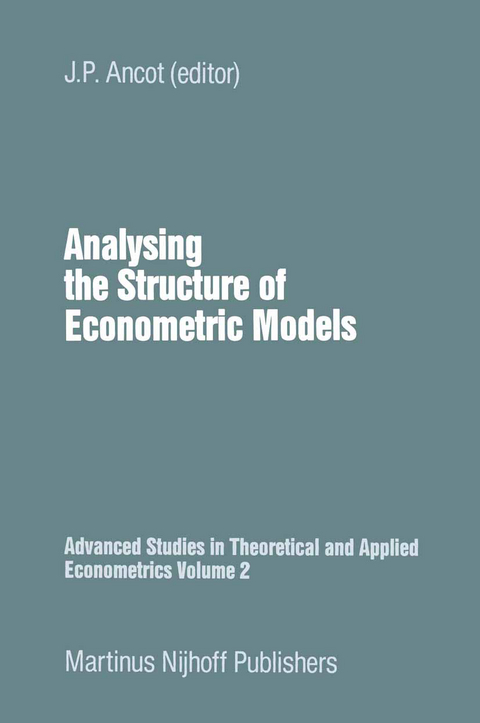
Analysing the Structure of Economic Models
Springer (Verlag)
978-94-009-6100-5 (ISBN)
I: Qualitative Analysis.- 1. Qualitative Structural Analysis: Game or Science?.- 2. Two Approaches in Reading Model Interdependencies.- 3. Reading Macroeconomic Models and Building Causal Structures.- 4. Structural Analysis, Hierarchical Functions, and Poor Structures.- 5. Rationing and Aggregation in a Multi-level Model of Household Behaviour: the SABINE model.- II: Quantitative Analysis.- 6. Semi-reduced Forms of Econometric Models.- 7. The Dynamics of a Discrete Version of a Growth Cycle Model.- 8. The Structure of Rational Expectations Behaviour in Economics: an empirical view.- 9. The Disequilibrium Theory in Macroeconomic Models: a small scale model.- 10. The Monetary Sector of the Netherlands in 50 Equations.- 11. Specification of the Import Function and the Determination of Short and Long Term Equilibria in Macroeconomic Models.- 12. An Alternative to Debreu’s Dated and Located Commodities.
| Reihe/Serie | Advanced Studies in Theoretical and Applied Econometrics ; 2 |
|---|---|
| Zusatzinfo | VIII, 255 p. |
| Verlagsort | Dordrecht |
| Sprache | englisch |
| Maße | 160 x 240 mm |
| Themenwelt | Wirtschaft ► Allgemeines / Lexika |
| Wirtschaft ► Volkswirtschaftslehre ► Ökonometrie | |
| ISBN-10 | 94-009-6100-6 / 9400961006 |
| ISBN-13 | 978-94-009-6100-5 / 9789400961005 |
| Zustand | Neuware |
| Haben Sie eine Frage zum Produkt? |
aus dem Bereich


